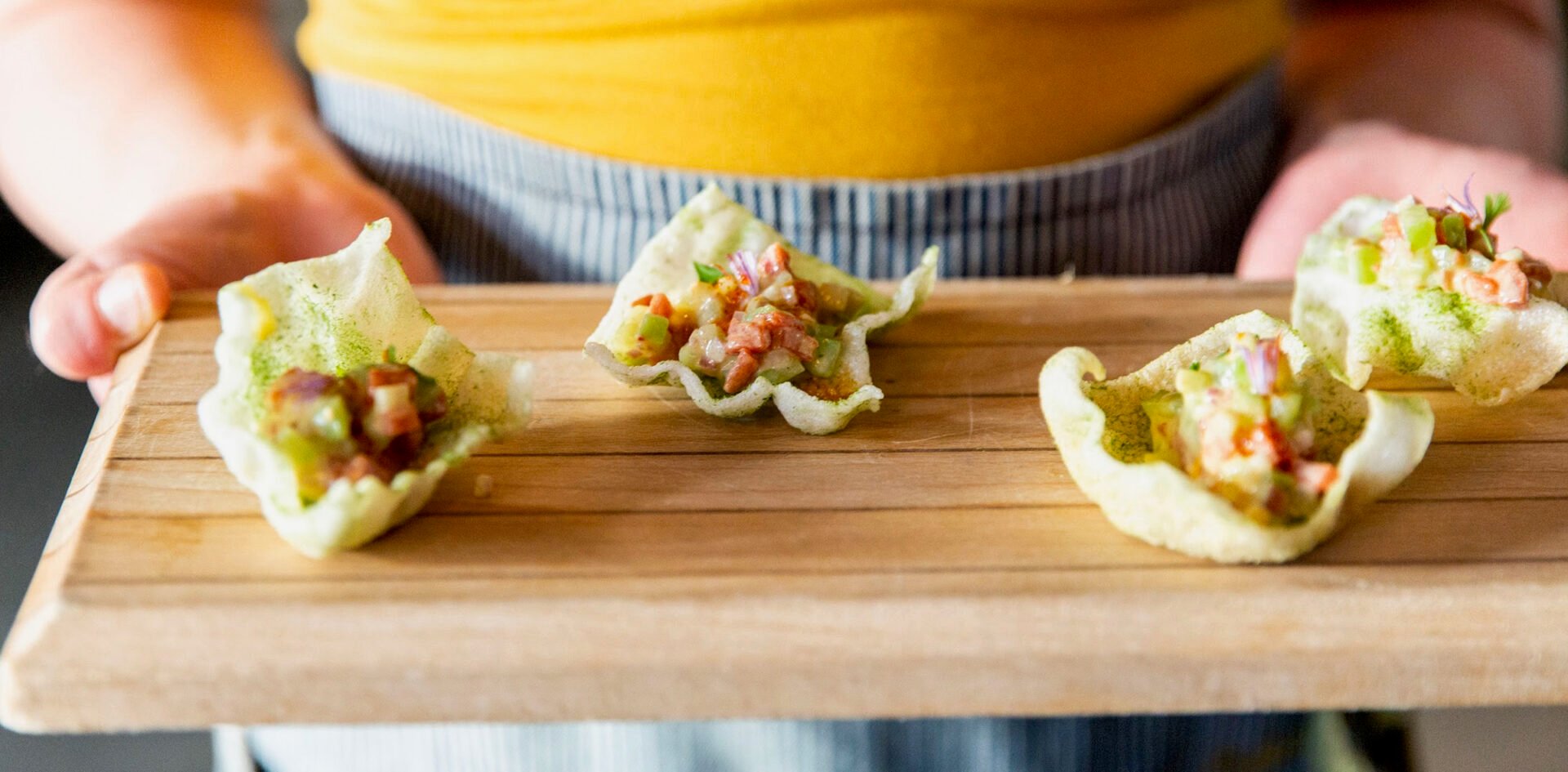GFI funds “gold standard” alternative seafood development

Accelerating alternative seafood innovation
Given the precarious state of our oceans, alternative seafood companies are working hard to get their products onto the market sooner rather than later. Private startups have made impressive progress in the last few years to bring the dream of cultivated seafood closer to reality. Academic research into cultivated seafood is also picking up the pace—last year’s grantees funded by our Competitive Research Grants Program included five impressive teams pursuing cultivated seafood cell line development, optimized differentiation protocols, and scaffolding.
Despite this progress, the pace of innovation is being limited by a lack of open-access knowledge regarding the parameters that define high-quality seafood. The same limitations apply to academic researchers, who might produce a small sample of cultivated meat or seafood but lack the funding or other resources to thoroughly characterize its properties in comparison to its conventional counterpart. This hurdle is by no means insurmountable, but its persistence is leading to the unnecessary duplication of work and taking away from higher-impact activities that researchers could be spending their time and resources on.
Defining a gold standard for alternative seafood
To help overcome this hurdle, GFI has awarded a grant to researchers at the Brazilian Agricultural Research Corporation (EMBRAPA), with Almirante Paulo Moreira Institute for Sea Studies as partner, to identify the characteristics of “gold standard” seafood products. Led by Dr. Fabiola Fogaça, EMBRAPA’s team of researchers will collect quantitative data from six fish species—Atlantic salmon, bigeye tuna, yellowfin tuna, swordfish, grouper, and snook—and shrimp.
Dr. Fogaça and her team’s work will be enabled by a partnership with Fishtag, a supplier of conventional seafood with a strong focus on sustainability and traceability. By ensuring that the seafood samples characterized in this project are of known origin and of high quality and freshness, the partnership with Fishtag will further the goal of identifying what gold standard-quality seafood looks like.
Not your average fish fillet
With consumers eating between 200 and 300 different species of fish and shellfish, there are endless opportunities to develop novel alternative seafood products. Once an alternative seafood producer has selected a target species to focus on, it will be necessary to define specific target parameters—things like color, texture, fat content, and so on. We hope the data produced from this project will make it easier for alternative seafood producers to choose a premium version of their chosen product as their target, rather than your average grocery store fish fillet. Furthermore, with alternative seafood offering the promise of more consistent product quality than what is often possible with conventional seafood, this choice of a target could make the difference between consistently high quality and consistently average quality products.
“My view is that the future of the food/protein industry will be cell-based, hopefully in 50 years, there will be no animals being killed for food. We are thrilled to be part of this project and (are) hoping that the fish we provide will help plant-based and cell-based developers create delicious seafood.”
Verônica Ribeiro, Fishtag Head of Business Development
Expanding open-access data
The data produced from this project will be made available to the community via GFI’s PISCES tool, which provides data on the characteristics of conventionally produced seafood in order to accelerate the development and commercialization of alternative seafood. Up until now, PISCES has just been a place to gather existing information related to specific aquatic species in one spot, however, there is still a great deal of important data that isn’t yet publicly available or doesn’t yet exist.
The new data generated through this project will expand this database, adding valuable information on color and pH measurements, histology of muscle tissue, gas chromatography/mass spectrometry to measure volatile compounds that contribute to aroma, instrumental texture measurements, measurements of several aspects of protein functionality, and more.
Soon, you’ll be able to head to PISCES to answer detailed questions like, “How wide are the muscle fibers in Atlantic salmon? What about the distribution of fat cells in swordfish? How does yellowfin tuna muscle react when compressed?” According to Dr. Fogaça, “These aspects will form the basis for the development of future plant-based and cultivated seafood products.”
Supporting independent research
The data and methods from this project may also be useful in supporting independent research projects on a wide variety of topics. For example, the development and industry-wide adoption of meat characterization standards will make it easier for research groups to build off of one another’s work, helping to reduce the duplication of effort within the industry and improving reproducibility. This project is one of the first steps toward that goal, and we are eager to hear from alternative seafood researchers and companies about how they use the data, as well as what additional data would be most valuable.
Post-harvest processes in cultivated meat and seafood may also differ from those in conventional meat in ways that are hard to predict, and will likely have profound influences on the quality of the final product. Quantitative data on the properties of high-quality conventional protein products will make it easier to design and carry out experiments aimed at understanding these processes in cultivated products.
Seafood characterization is an area we have been wanting to work on for quite some time at GFI, and we’re excited that the project is FINally getting started! Check out our Sustainable Seafood Initiative to learn more!

Page
Sustainable Seafood Initiative
Learn how plant-based, fermentation-derived, and cultivated seafood can improve the health and sustainability of oceans.
Header image: Wildtype Salmon Tartare, Rachelle Hacmac

